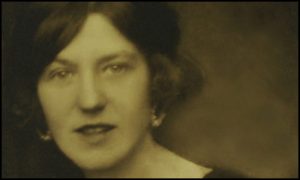![]() by Hope Mirrlees
by Hope Mirrlees
The fantasy Lud-in-the-Mist, originally published in 1926, has a great deal of quiet charm in its prose. As you read, Mirrlees gives you a lush sense of the ordinary life of the town of Lud-in-the-Mist. For the attentive reader, this can become a clue as to what the author is doing with her story of a town near the borders of Fairyland.
In the ancient past of Lud-in-the-Mist, the mundane population used to have regular traffic with the denizens of Fairyland. But in the generations since that time, the humans have come to regard the fairies with considerable doubt. Traffic with Fairyland has been discourage, to the degree that the borders are watched carefully, to prevent anything from Fairyland infecting the human lands.
Our unlikely hero is the mayor of Lud-in-the-Mist, who has struggled all his life with the temptations of fantastical things. Even the spring blossoms in his garden seem to him to enfold the temptations of Fairyland. Everyone around him believes he is a practical man, untouched by the wild mysteries of the fairies. But he starts to go off his staid course when first his son and then his daughter are enticed by the lures of Fairyland.
When he sets out to discover what has happened to his children, he also begins to investigate an old murder mystery. He’s unsatisfied by the conclusions that had been reached back at the time of the death.
I first read this book when I was in high school, and I suspect the subtle subversion that Mirrlees wove into her story went over my head. The story is not the usual “humans invade Fairyland”, but rather “fairies invade Humanland.” And our expectations meet with unanticipated handling.
This isn’t going to be the type of wonder-tale that one usually expects from fantasy. But it is certainly worth reading for its fresh perspective on traditional tales of the fantastical.

